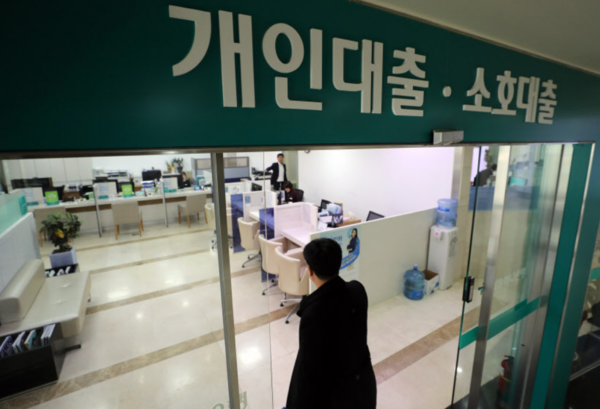Input 2021.01.22 16:24
If amortization is obligated, the DSR ratio rises sharply even if a small amount of credit is received. The limit on additional mortgage loans is inevitably reduced. Currently, in the case of speculative and overheated districts, housing mortgage loans can be received up to 40% of the house price. Comes out.
On the 22nd, the Financial Services Commission decided to introduce an amortization method in which the principal is paid off for large credit loans exceeding a certain amount, and plans to come up with a related plan in the first quarter. Credit loans usually pay only interest every month until their maturity, and then pay off the principal at once. As interest rates have recently decreased and the interest burden has decreased, demand for “getting a loan once” has increased. If the amortization method, which pays off interest and principal together, is implemented, the movement to receive unnecessary loans will decrease somewhat, the financial authorities predict.

DSR is the annual principal and interest payment of all loans divided by annual income. Credit loans usually have a maturity of one year, but have been regarded as paying off for 10 years when calculating DSR, considering the behavior of extending and using each year. However, if the repayment period decreases, the annual principal and interest repayment amount to be paid increases, and the DSR ratio increases significantly even if a small amount of credit is received.
Although the standard for high-income credit loans to be applied in amortization has not been established yet, if the total amount of credit loans received by high-income earners with an annual income exceeding KRW 80 million exceeds KRW 100 million, the standard will be set at KRW 100 million because 40% of the DSR regulation per borrower is applied. Observations are made. Based on this, assuming that an employee A, an annual income of 80 million won, borrowed a credit loan of 100 million won at an annual interest rate of 2%, the DSR rate is 14% if the repayment period is 10 years. However, if this repayment period is reduced to five years, the DSR rate nearly doubles to 26%.
In other words, only 14% of the DSR 40% excluding 26% of credit loans can generate additional loans. If Mr. A receives an additional mortgage loan, DSR 40% will be full even if he borrows only 210 million won at an annual interest rate of 3% for 30 years. If the credit loan repayment period is 10 years, the limit of possible home mortgage loans is 200 million won, compared to 410 million won.
An official from the Financial Services Commission said, “It is difficult to ascertain how long the credit loan amortization period will be adjusted as it is necessary to simulate,” he said. “It is true that additional loans become somewhat difficult if the DSR is expanded.”
Another analysis suggests that the amortization of credit loans can act as a stronger measure than the current mortgage ratio (LTV) regulation. The government is applying LTV 40% for housing prices below 900 million won and 20% LTV for excess of 900 million won in speculative and overheated areas. For example, if you buy a house worth 1 billion won in Seoul, you can get a home mortgage loan of up to 380 million won. A commercial bank official explained, “To get the most out of home mortgage loans, you may have to give up large credit loans.”
Accordingly, the banking sector is predicting that demand will be driven by the negative bankbook, which the financial authorities announced that they would exclude the application of the amortization method. However, if negative bankbooks are not eligible for amortization, the balloon effect can cause demand to rush to the negative bankbooks. As such, the financial authorities are also suggesting strengthening the management of negative bankbooks, so it is unlikely that even this will be helpful. A commercial bank official said, “The maximum limit may be lower than now in order to prevent the concentration of negative bankbooks.”
